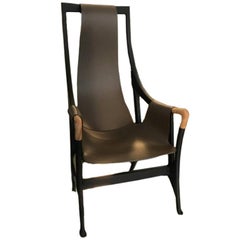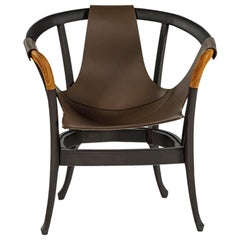Progetti Pure
Recent Sales
Progetti 30240 Armchair by Giorgetti
By Giorgetti S.p.A.
Located in Houston, TX
: tobacco saddle leather with finish 2T (anthracite grey).
Progetti Pure is a Certified Limited Edition
Category
21st Century and Contemporary Modern Armchairs
Materials
Leather, Wood, Beech
Progetti Pure by Giorgetti
Located in New York, NY
Armchair with a wooden structure and a tan saddlehide seat
Category
21st Century and Contemporary Armchairs
Materials
Leather
Progetti Pure Bergere by Giorgetti
Located in New York, NY
Armchair with a wooden structure and a tan saddlehide seat
Category
21st Century and Contemporary Armchairs
Materials
Leather
Get Updated with New Arrivals
Save "Progetti Pure", and we’ll notify you when there are new listings in this category.
Progetti Pure For Sale on 1stDibs
Find many varieties of an authentic progetti pure available at 1stDibs. Frequently made of metal, steel and fabric, every progetti pure was constructed with great care. If you’re shopping for a progetti pure, we have 5 options in-stock, while there are 5 modern editions to choose from as well. Your living room may not be complete without a progetti pure — find older editions for sale from the 20th Century and newer versions made as recently as the 21st Century. A progetti pure made by mid-century modern designers — as well as those associated with Art Deco — is very popular. Emaf Progetti, Zanotta and Giorgetto Giugiaro each produced at least one beautiful progetti pure that is worth considering.
How Much is a Progetti Pure?
A progetti pure can differ in price owing to various characteristics — the average selling price 1stDibs is $5,830, while the lowest priced sells for $1,480 and the highest can go for as much as $8,290.
More Ways To Browse
Ruhlmann Commode
Chinese Export Eight Panel Coromandel Screen
Chinese Marionette
Chinese Opera Puppet
Christ Pantocrator
Christopher Dresser Teapot
Chrome Fireplace Screen
Classic Rose Rosenthal
Cloisonne Peacock
Cloissone Jewelry Box
Coal Forge
Cobalt Blue Fruit Plates
Cockspur Street
Cocktail Shaker Cork
Cold Painted Parrot
Coldstream Guards
Commode Turquoise
Concorde Supersonic

